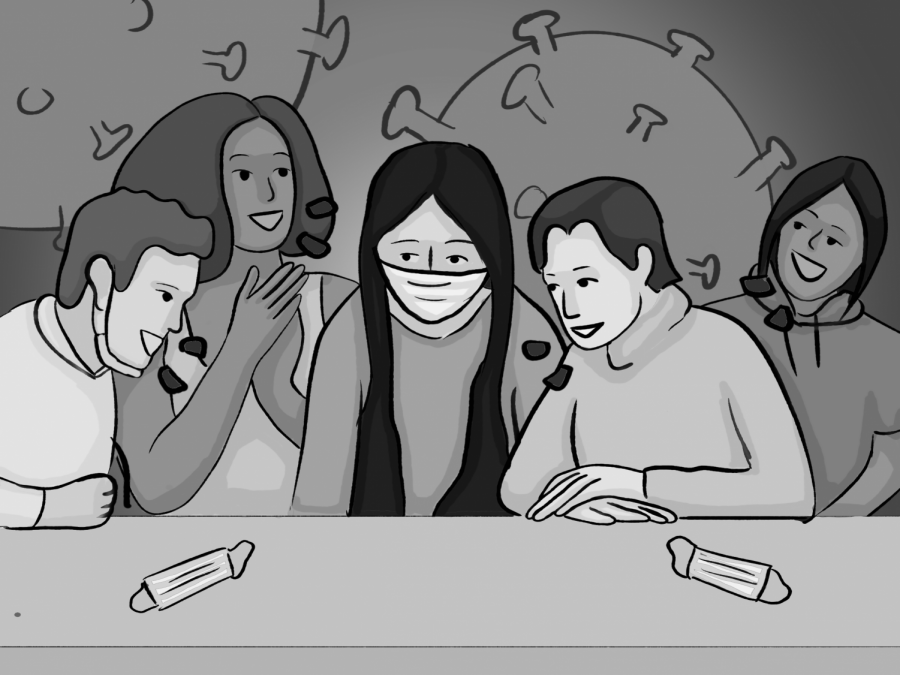OPINION: SCHS’s COVID-19 guidelines are lackluster and requires more efficient efforts to prevent the spread of the virus
Students actively ignore COVID-19 safety guidelines without social distancing and masks.
As the pandemic slowly wanes, many people have opted back into being in-person, whether it be at school, work or in public. With SCHS and the district returning to in-person education, their written protocols for safety are often ignored, instead mostly returning to a pre-distance learning environment. This is a problem because social distancing is naught, and the school is missing opportunities to offer better sanitation practices.
The Santa Clara High Preparedness Plan states that “the teacher’s desk will be at least six feet away from the student’s desks. Students will have assigned seating to ensure that close contacts within the classroom are minimized.” This change is not fully present within the SCHS environment yet. Even so, the CDC’s website recommends, “Physical distancing as much as possible when moving through the food service line and while eating (especially indoors),” yet nothing eases this concern. Rather, people crowd the lines and large groupings still occur when eating, which is a straight and direct return to pre-distance learning.
When coming and going to school, the district’s COVID-19 Health & Safety Plan states, “Close contact between students, staff, and families, and the broader community at arrival and departure will be minimized through the following method: Utilize as many entrances and exits as can be supervised appropriately to decrease crowding at entry and exit points…” Although multiple points are present for entering and exiting, many prefer to crowd around the main gate, especially during the morning. To alleviate this problem, there are spots that can be opened, such as the large gate in-between the gym and the theater as well as the large gate in between the main office and theater. The two double doors located by the main entrance and the staff parking lot could be more marked as an entrance, so students know where to enter. These locations can let students access more spaces safely.
Since many have followed proper hygiene practices in their return to school, things have been relatively fine in terms of cleanliness. These practices can be made more effective through less contact with items. The CDC reports that data “from surface survival studies indicate that a 99 percent reduction in infectious SARS-CoV2 and other coronaviruses can be expected under typical indoor environmental conditions within 3 days on common non-porous surfaces like stainless steel, plastic, and glass.” In the bathrooms, students have to touch items like soap or paper towel dispensers, which increases the likelihood of infections. Even so, the bathrooms within the science wing are not up to par with other bathrooms, still relying on touch-based faucets. Lesser contact is better, and automation makes things safer.
Though SCHS is not out of the woods yet in terms of the COVID-19 pandemic, the school still has the opportunity to improve on procedures that were established to help protect students. Social distancing should still be enforced, and the administration should continue to tell students to limit large group gatherings and to be hygienic. In conjunction, all staff members should try to break up large groups circulated in one area, and placards should be posted so distancing can still be regulated. Furthermore, lunch lines should be regulated more efficiently to avoid crowding. By doing all of this, the school can more effectively protect students from the COVID-19 virus.


